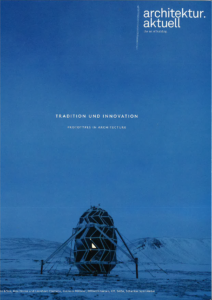Bamboo
Bamboo belongs to the family of grasses. Grasses are plants, which typically have one seed leaf and continue to grow with narrow leaves from their base. The family includes “true grasses”, sedges and rushes. The Chair of Architecture and Construction at FCL is mostly interested in true grasses such as bamboo and cerials, since their characteristics show a high potential for taking tensile stress.
Looking at available local resources, the “magic triangle” contains one of the most neglected building materials in the world so far: Bamboo. Most developing territories today with an ever-growing speed of population increase and with it an ever-increasing need for housing are to be found in a belt around the equator. And also here, bamboo is usually the fastest growing, affordable and local available natural resource, which has outstanding constructive qualities. Bamboo grows much faster than wood and is usually available in great quantities and it is easy to obtain. It is also known for its unrivalled capacity to capture carbon and could therefore play an important role in reducing CO2 emissions world wide. Developing territories around the equator belt could use this capacity even as an income source, selling CO2 certificates in a global market.
Global natural habitat of bamboo
Bamboo is extremely resistant to tensile stress and is therefore one of nature`s most extreme products. In principle, bamboo is with regard to its mechanical-technological properties superior to timber and even to reinforcement steel in terms of the ratio of liveload and deadweight [1]. The “hinterland” of Singapore offers a huge potential for developing new ideas to use bamboo not only in rod structures but also as composite material in an added value chain mentality, which will help developing territories to build up supply chains domestically and therefore reduce their dependencies on imported building materials. New technologies of bamboo composite productions allow for a new view on already elaborated methodologies of the 1950`ies and 60`ies by the US Naval Civil Engineering Laboratory [2] and the Clemson Agricultural College [3]. The research will focus to develop new products, based on bamboo as one of the most efficient and fastest growing resources in the equator belt.
[1] Klaus Dunkelberg: Bamboo as Building Material, IL 31, Institut für leichte Flächentragwerke (IL), Stuttgart 1985
[2] Francis Brink and Paul Rush: Bamboo Reinforced Concrete Construction, US Naval Civil Engineering Laboratory, California, 1966
[3] H. E. Glenn: Bamboo reinforcement in portland cement concrete, Engineering Experiment Station, Clemson Agricultural College, South Carolina, Bulkletin Nr. 4, May 1950






























